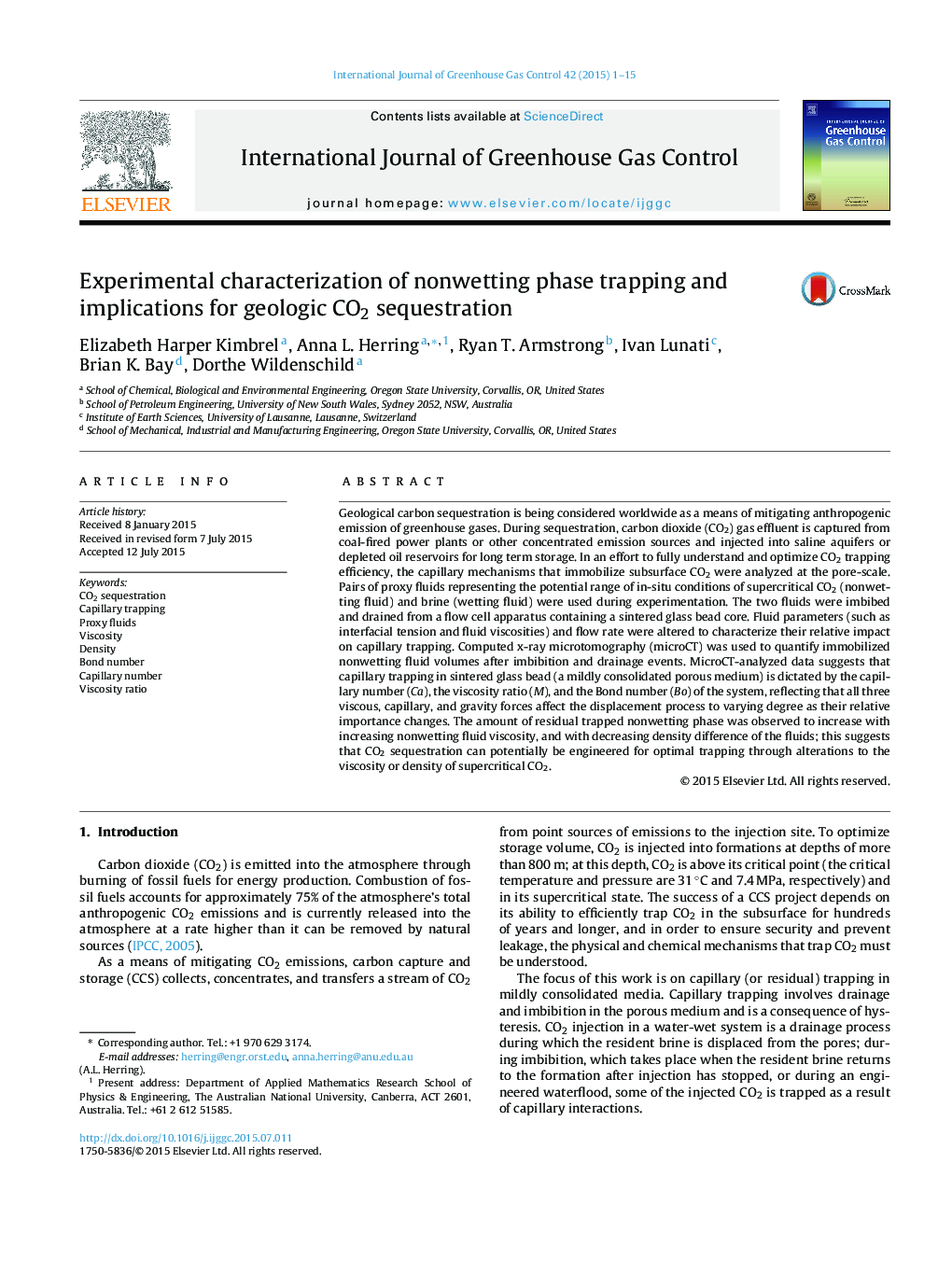| کد مقاله | کد نشریه | سال انتشار | مقاله انگلیسی | نسخه تمام متن |
|---|---|---|---|---|
| 8090424 | 1521979 | 2015 | 15 صفحه PDF | دانلود رایگان |
عنوان انگلیسی مقاله ISI
Experimental characterization of nonwetting phase trapping and implications for geologic CO2 sequestration
دانلود مقاله + سفارش ترجمه
دانلود مقاله ISI انگلیسی
رایگان برای ایرانیان
کلمات کلیدی
موضوعات مرتبط
مهندسی و علوم پایه
علوم زمین و سیارات
فرآیندهای سطح زمین
پیش نمایش صفحه اول مقاله

چکیده انگلیسی
Geological carbon sequestration is being considered worldwide as a means of mitigating anthropogenic emission of greenhouse gases. During sequestration, carbon dioxide (CO2) gas effluent is captured from coal-fired power plants or other concentrated emission sources and injected into saline aquifers or depleted oil reservoirs for long term storage. In an effort to fully understand and optimize CO2 trapping efficiency, the capillary mechanisms that immobilize subsurface CO2 were analyzed at the pore-scale. Pairs of proxy fluids representing the potential range of in-situ conditions of supercritical CO2 (nonwetting fluid) and brine (wetting fluid) were used during experimentation. The two fluids were imbibed and drained from a flow cell apparatus containing a sintered glass bead core. Fluid parameters (such as interfacial tension and fluid viscosities) and flow rate were altered to characterize their relative impact on capillary trapping. Computed x-ray microtomography (microCT) was used to quantify immobilized nonwetting fluid volumes after imbibition and drainage events. MicroCT-analyzed data suggests that capillary trapping in sintered glass bead (a mildly consolidated porous medium) is dictated by the capillary number (Ca), the viscosity ratio (M), and the Bond number (Bo) of the system, reflecting that all three viscous, capillary, and gravity forces affect the displacement process to varying degree as their relative importance changes. The amount of residual trapped nonwetting phase was observed to increase with increasing nonwetting fluid viscosity, and with decreasing density difference of the fluids; this suggests that CO2 sequestration can potentially be engineered for optimal trapping through alterations to the viscosity or density of supercritical CO2.
ناشر
Database: Elsevier - ScienceDirect (ساینس دایرکت)
Journal: International Journal of Greenhouse Gas Control - Volume 42, November 2015, Pages 1-15
Journal: International Journal of Greenhouse Gas Control - Volume 42, November 2015, Pages 1-15
نویسندگان
Elizabeth Harper Kimbrel, Anna L. Herring, Ryan T. Armstrong, Ivan Lunati, Brian K. Bay, Dorthe Wildenschild,